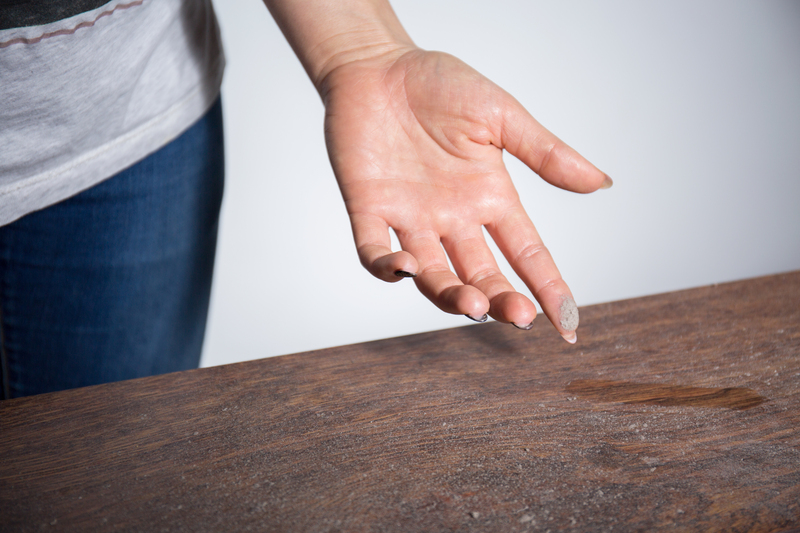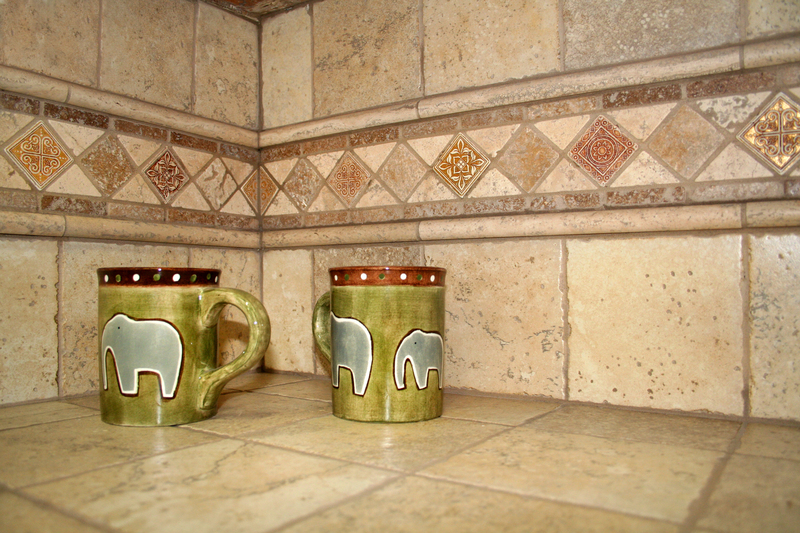The Ultimate Jewelry Cleaning Guide for Gem Enthusiasts
Posted on 06/09/2025
The Ultimate Jewelry Cleaning Guide for Gem Enthusiasts
For passionate gem enthusiasts, a piece of jewelry is not simply an accessory--it's a treasured investment, a story, a work of art. Preserving the resplendence of each jewel is crucial, yet safely cleaning gemstone jewelry poses unique challenges. Whether you're a collector, a hobbyist, or simply love your gems sparkling bright, this comprehensive guide offers expert advice on how to clean, care for, and protect your precious jewelry.
Why Regular Jewelry Cleaning Is Essential
Jewelry, especially pieces set with gems, can accumulate dirt, oil, and everyday grime that diminishes their natural radiance. Over time, dust and cosmetics can settle in crevices, while body oils can create a dulling film. Routine and proper cleaning not only restores the beauty of your gemstones and metals but also helps preserve longevity and prevent damage.
- Maintain Brilliance: Clean gems sparkle brighter when free from buildup.
- Preserve Value: Well-maintained jewelry retains value and quality.
- Prevent Wear: Dirt and grime can accelerate scratches and defects.
- Spot Damage Early: Cleaning reveals loose prongs or chips before they worsen.

Understanding Your Gemstone Jewelry
Before selecting a cleaning method, it's crucial to understand the properties of your jewelry's gemstones. Not all gems respond the same to cleaning; some are tough and resilient, while others are delicate and porous.
Common Gemstone Types and Care Requirements
- Diamonds: Exceptionally hard, but oil-attracting. Responds well to most cleaning methods.
- Rubies & Sapphires: Durable corundum gemstones, generally safe for ultrasonic cleaning.
- Emeralds: Porous and often oiled to enhance color; require gentle cleaning only.
- Opals & Pearls: Extremely delicate, sensitive to chemicals and moisture.
- Turquoise, Lapis Lazuli, Malachite: Soft and porous; avoid soaking and abrasive cleaning.
- Amethyst, Citrine & Quartz: Fairly sturdy, but still require careful handling.
Pro Tip: If in doubt, always check the Mohs hardness scale and consult a jewelry professional before proceeding with cleaning.
Essential Jewelry Cleaning Tools and Supplies
Having the right tools ensures effective and safe cleaning. Here's what every gem enthusiast should keep in their cleaning kit:
- Soft-bristled toothbrush or a brush designed for jewelry
- Microfiber or lint-free cloths
- Mild dish soap or jewelry cleaning solution (check compatibility with all gems)
- Bowl of lukewarm water
- Soft polishing cloth for metal settings
- Non-metallic tweezers
- Wooden toothpicks or cotton swabs
- Jewelry steam cleaner or ultrasonic cleaner (for eligible gems only)
Safe Jewelry Cleaning Methods for Gem Collectors
1. Gentle Soap and Water Method
- Fill a bowl with warm (not hot) water and add a few drops of mild, non-abrasive dish soap.
- Soak the jewelry for 5-10 minutes (except for soft or porous stones; skip soaking for them).
- Brush gently with a soft-bristled brush to dislodge dirt, paying attention to crevices.
- Rinse thoroughly with clean water.
- Pat dry with a microfiber cloth. Never use paper towels, which can scratch.
2. Commercial Jewelry Cleaners
Jewelry cleaning solutions are formulated for different stone types. Only use recommended cleaners for your specific gems and metals. Always read the label.
- Solution-based dips: Effective for diamonds, sapphires, and gold, but may damage porous stones.
- Foam cleaners: Safer for softer stones and delicate settings.
3. Ultrasonic Cleaners
Ultrasonic cleaners use hi-frequency sound waves to dislodge dirt. These devices are ideal for hard, non-porous gems and precious metals, but can be hazardous for softer, treated, or cracked stones and organic materials.
- Safe for: Diamonds, sapphires, rubies, gold, and platinum (with precautions)
- Unsafe for: Emeralds, opals, pearls, turquoise, and any fracture-filled or oiled gemstones
4. Professional Cleaning Services
If your jewelry is valuable, antique, or you're unsure about its composition or structural integrity, contact a professional jeweler. They can clean, polish, and inspect pieces, ensuring no loose settings or hidden damage is overlooked.
The Best Way to Clean Precious Metals
Good gemstone care also relies on maintaining the luster of the settings. Metal can tarnish, scratch, or become grimy. Here's how to care for your settings:
- Gold: Soak in soapy water and gently polish with a soft cloth.
- Platinum: Clean as for gold, and use a specialized platinum polish for scratches.
- Silver: Use a silver cleaning cloth or a silver cleaning solution. Avoid harsh chemicals that cause pitting.
Pro Tip: Always dry metal thoroughly after cleaning, and store away from moisture and air to prevent future tarnish.
Special Considerations for Different Gemstones
How to Clean Diamonds
- Use the soap and water method or dilute ammonia solution for intense brilliance.
- Regular brushing ensures removal of oil buildup.
- Ultrasonic cleaners safe unless stone is fracture-filled.
How to Clean Pearls
- Never soak pearls; prolonged moisture can cause string weakening.
- Wipe each pearl with a slightly damp, soft cloth after wear.
- If necessary, use a drop of mild soap diluted in water on a cloth; rinse with another damp cloth.
- Let dry flat to prevent string stretching.
How to Clean Opals and Soft Gems
- Do not use ultrasonic, steam, or ammonia cleaners.
- Wipe gently with a damp cloth only.
- Never expose to sudden temperature changes--they can crack.
How to Clean Emeralds
- Do not use ultrasonic or steam cleaners; avoid chemicals.
- Use lukewarm water and mild soap with a soft brush.
- Pat dry with a lint-free cloth.
How to Clean Organic and Porous Gems (Turquoise, Coral, Amber, Malachite, etc.)
- Avoid soaking or using chemical cleaners.
- Wipe with a barely damp, soft cloth only.
- Store away from sunlight and heat.
How Often Should You Clean Jewelry?
The frequency depends on how often the piece is worn and the type of gems. Regularly worn jewelry should be cleaned monthly to prevent buildup. High-value, antique, or rarely worn pieces should still be checked and cleaned every few months. After each wear, a quick wipe-down with a soft cloth will help reduce residue and keep gems gleaming.
Jewelry Cleaning Don'ts: Mistakes to Avoid
- Don't use toothpaste or baking soda--they are abrasive and can scratch both metal and gems.
- Don't use bleach or harsh chemicals; these can etch, pit, or discolor gems and metals.
- Don't soak soft, treated, or porous stones; they can absorb water and chemicals, leading to damage.
- Don't use ultrasonic cleaners for all jewelry; always check gem compatibility first.
- Don't use rough brushes, paper towels, or tissues--they leave scratches and lint.
Expert Tips for Long-Term Gemstone Jewelry Care
- Store jewelry separately: Use pouches or lined boxes to prevent scratching.
- Remove jewelry before swimming, exercising, or cleaning: Chemicals and impacts can harm stones and metal.
- Have settings checked by a jeweler annually: This prevents stone loss due to loose prongs.
- Keep jewelry away from direct sunlight and high heat: Especially important for opals, pearls, and colored stones, which can fade or crack.
- Always handle jewelry with clean hands: Oils and lotions attract dirt.
DIY Jewelry Cleaning Recipes for Enthusiasts
If you enjoy a natural or cost-effective approach, consider these safe, homemade jewelry cleaning solutions:
Mild Soap & Water Solution
- Mix a few drops of gentle, non-detergent soap in a bowl of lukewarm water.
- Use this for gold, diamonds, sapphires, and most quartzes.
Baking Soda Paste (For Sturdy Metals, Not Stones)
- Mix baking soda with a bit of water to form a paste.
- Use for polishing tarnished silver only--never on stones or gold.
White Vinegar Soak (Silver Only)
- Soak silver (without stones) in white vinegar for 15 minutes, then rinse and dry.
Warning: Avoid using these solutions for pearls, opals, and porous stones. Always patch test first or consult a jeweler.
The Ultimate Jewelry Cleaning Checklist
- Identify each gemstone and its care requirements before cleaning.
- Assemble soft, clean tools and the correct solution for each piece.
- Work in a well-lit, cushioned area to prevent drops and losses.
- Inspect jewelry for loose or damaged settings both before and after cleaning.
- Dry thoroughly and store properly after each cleaning session.

Frequently Asked Questions About Jewelry Cleaning
Can I use a toothbrush to clean my gemstone jewelry?
Yes, but only if it's soft-bristled. Hard brushes can scratch metals and softer stones.
Is ultrasonic cleaning safe for all gems?
No. Only certain hard, untreated gemstones and metals are safe. Always check your specific jewelry before using this method.
How do I clean a piece with multiple types of gemstones?
Clean according to the most delicate stone in the setting. Avoid any cleaning method that could damage any of the gems.
Should I remove rings when washing hands?
Yes, especially if your hand soap contains moisturizers or harsh chemicals that can build up on gems or loosen glue in some settings.
What if my jewelry has a persistent tarnish or stain?
Bring it to a professional jeweler. Persistent tarnish, staining, or residue could be due to reactions between metals, treatments, or environmental exposure and may require expert care.
Conclusion: Shine On, Gem Enthusiasts!
Maintaining the luster, value, and beauty of your prized gemstone jewelry is easier than ever with these ultimate jewelry cleaning tips. With diligence and care, every gem can gleam like new for years to come. Remember, when in doubt, less is more--and your trusted jeweler is always a valuable resource.
Ready to make your jewelry collection shine? Refer back to this guide for safe, effective, and expert-approved cleaning for all your precious pieces. Happy cleaning!



